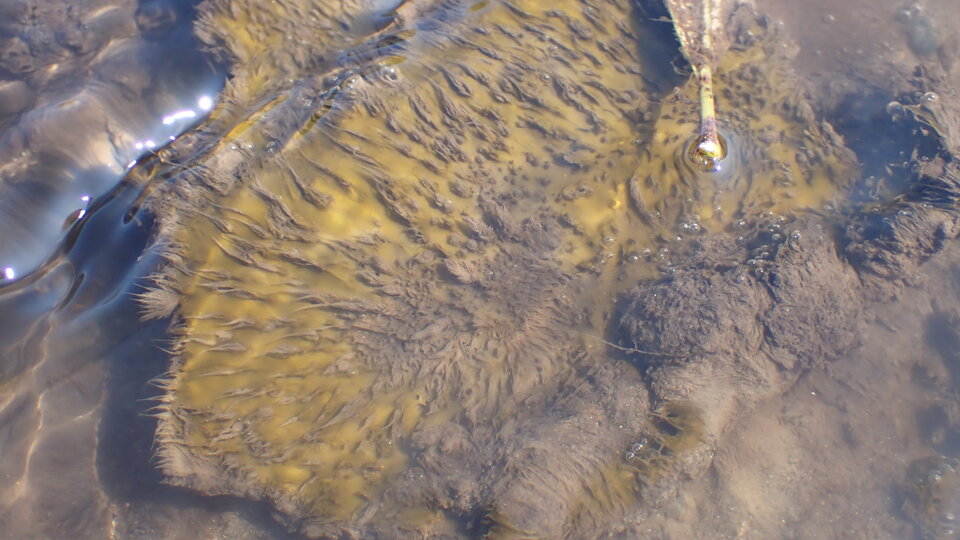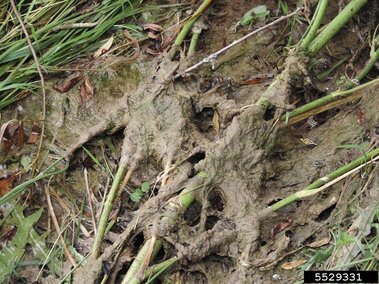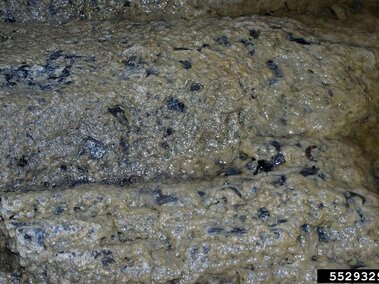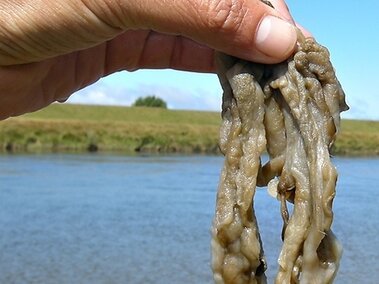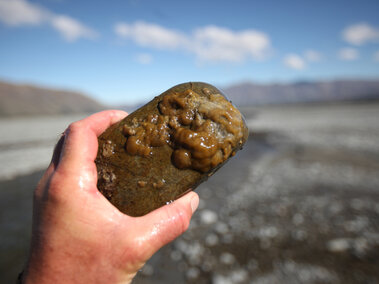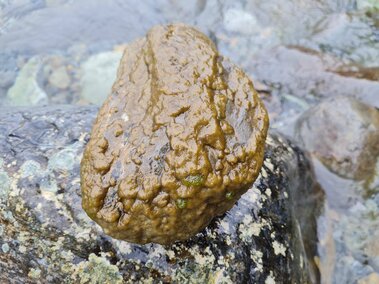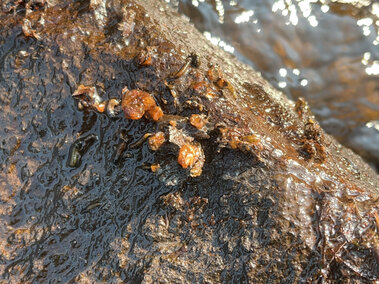General Information
Species Name: Didymosphenia geminata
Also Known As: Rock snot
Family: Gomphonemataceae (Diatom)
Growth Form: Algae
Life Span: Can survive at least 40 days outside of water as long as it remains in a damp, cool environment
Flowering Dates: None
Origin: Far northern regions of Europe, Asia and North America
Noxious: No
Category 1: Priority Aquatic Invasive Species
Why Is It Invasive?
Didymo alters stream ecology by forming dense algal blooms that can cover up to 100 percent of stream bottoms. It blankets streams or lake beds, blocks plants from sunlight and animals that eat plants from reaching them, and greatly reduces dissolved oxygen content in water. Outbreaks of didymo are thought to have contributed to the declines of freshwater wildlife populations, especially fish that have important recreational value. This relationship between didymo and fish declines is an area of active research. The recreational value of infested waterways is severely reduced because large clumps of rock snot floating down stream catch on fishing flies, spinners, and hooks demanding almost constant removal each time line is retrieved.
What Does It Look Like?
General Characteristics
Didymo is a freshwater, single cell, diatom (a type of algae) which attaches itself to a solid surface such as a rock with a stalk. It is light brown, brownish yellow, or white, looking very much like wet toilet paper. It has the texture of wet wool or cotton, fibrous not slimy or slippery and is not easy to pull apart.
Reproduction
It can reproduce asexually, resulting in large mats. It is able to spread from a single drop of water containing the diatoms. It usually reproduces most readily in cooler temperatures but has been recently known to tolerate warmer conditions.
Photos
Where Does It Grow?
Didymo can be found low-nutrient, cold water rivers, streams, and lakes. It prefers flowing water sources. Scattered populations exist throughout the United States, including New England, the Mid-Atlantic Region, and the Western U.S.
How Does It Spread?
Humans are largely responsible for the recent and prolific spread of didymo beyond its historical range. The microscopic diatoms can cling to fishing gear, waders, boots, and boats. Felt-soled wading boots are major vectors of didymo as the soles absorb cells like a sponge and provide a temporary habitat for the didymo cells until an angler visits a new site.
How Do I Control It?
Management of invasive aquatic plants involving either mechanical removal of plants or application of herbicides to public waters requires a permit. Contact the Contact the Nebraska Game and Parks Commission for more information.
Mechanical
Cutting or pulling the plant by hand or with equipment such as rakes or cutting blades could break it into fragments, allowing it to further spread. Contact the Nebraska Game and Parks Commission to determine appropriate removal methods.
Cultural
CLEAN your watercraft, trailer, angling gear and other equipment. Remove all aquatic vegetation and animal species from your equipment.
DRAIN your watercraft at the ramp by removing the boat plug and draining all live wells and ballast tanks.
DRY your watercraft, trailer and other equipment for at least 7 days before visiting another waterbody. However, this method alone is not recommended for absorbent materials because didymo can survive in slightly moist environments for an extended period of time. If cleaning, fully drying, or freezing is not practical, restrict equipment use to a single water body.
DON'T LET IT LOOSE. Do not release or transport exotic or non-native fish species to new ecosystems, and do not dump aquariums. It is unlawful to release any aquatic species into a waterbody other than the one from which it was harvested. Doing so can promote the spread of AIS.
Chemical
Application of chemicals to public waters requires a permit. Contact the Contact the Nebraska Game and Parks Commission for more information.
What Should I Do If I See It in Nebraska?
If you see didymo in Nebraska, you should report it to the Nebraska Game and Parks Commission's Aquatic Invasive Species (AIS) Program using their AIS Report Form. For guidance on what information to include in your report, check out our reporting tips.
References and More Information
Center for Invasive Species and Ecosystem Health
Nebraska Game and Parks Commission
New Invasive Species Information
UC Riverside Center for Invasive Species Research
